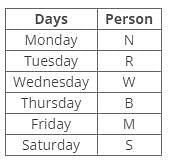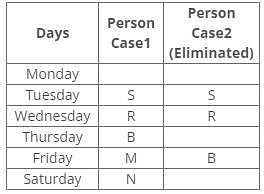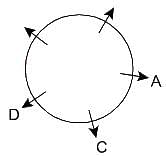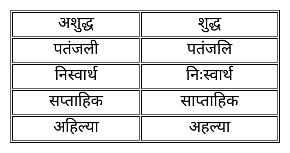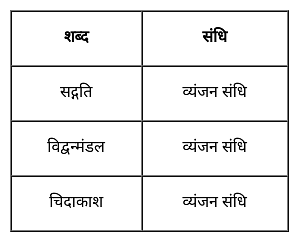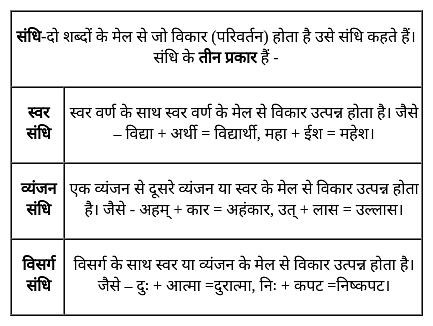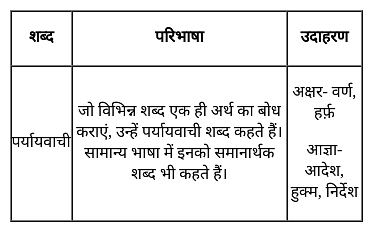DSSSB PRT Mock Test - 3 - DSSSB TGT/PGT/PRT MCQ
30 Questions MCQ Test - DSSSB PRT Mock Test - 3
Direction: In a family, there are six members P, Q, R, S, T, U, and V are a married couple. P being the male member. S is the only son of R, who is the brother of P. T is the sister of S. Q is the daughter-in-law of U, whose husband has died.
Q. Who is R to Q?
Direction: Read the given instructions carefully and answer the questions given beside.
Six people have midterm exam on different days of the same week, starting from Monday to Saturday. Who has exam immediately after B?
I. W has exam before B. N has exam before R. No one has exam after S. M has exam after Thursday. Three people has exam between S and R.
II. N has exam immediately after M. Two people have exam before R, who has exam immediately after S. B has exam after R but not on Saturday.
I. W has exam before B. N has exam before R. No one has exam after S. M has exam after Thursday. Three people has exam between S and R.
II. N has exam immediately after M. Two people have exam before R, who has exam immediately after S. B has exam after R but not on Saturday.
| 1 Crore+ students have signed up on EduRev. Have you? Download the App |
If a Paper (Transparent Sheet ) is folded in a manner and a design or pattern is drawn. When unfolded this paper appears as given below in the answer figure. Choose the correct answer figure given below.
Find out from the four alternatives as how the pattern would appear when the transparent sheet is folded at the dotted line.
Question Figure
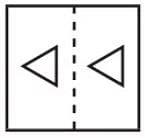
Answer Figure
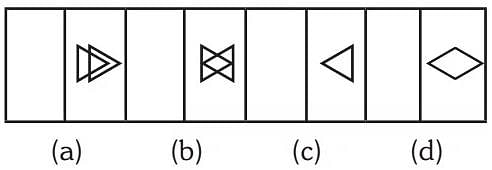
Find out from the four alternatives as how the pattern would appear when the transparent sheet is folded at the dotted line.
Question Figure


Direction: If a Paper (Transparent Sheet) is folded in a manner and a design or pattern is drawn. When unfolded this paper appears as given below in the answer figure. Choose the correct answer figure given below.
Find out from the four alternatives as how the pattern would appear when the transparent sheet is folded at the dotted line.
Question Figure
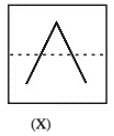
Answer figure

Directions: Each of the following consists of a question and two statements numbered I and II given below it. You have to decide whether the data provided in the statements are sufficient to answer the question.
A, B, C, D and E are sitting around a circle and facing away from the centre. Who sits second to the right of B?
Statement I: A sits to the immediate left of C. D sits second to the right of A.
Statement II: D sits immediately between E and B. B sits to the immediate left of A.
80 men can complete a work in 40 days and 50 women can complete the same work in 40 days. If the efficiency of each man is the same and the efficiency of each woman is also the same, the efficiency of each man is what percentage of the efficiency of each woman?
A frequency polygon is drawn for the following data. So the x-coordinate of the point having y coordinate as 21 is
Select the correct option in order to complete the analogy.
Venerate : Worship :: Extol : ?
Choose the correct option to mark the synonym of the words given in the question.
Quack
Direction: In the following question, the sentences have been given in Active/ Passive Voice. From the given alternatives, choose the one that best expresses the given sentence in Passive/ Active Voice.
Some people were helping the wounded woman.
Directions: The passage below is accompanied by a set of questions. Choose the best answer to each question.
Conflict had existed between Spain and England since the 1570s. England wanted a share of the wealth that Spain had been taking from the lands it had claimed in the Americas.
Elizabeth I, Queen of England, encouraged her staunch admiral of the navy, Sir Francis Drake, to raid Spanish ships and towns. Though these raids were on a small scale, Drake achieved dramatic success, adding gold and silver to England's treasury and diminishing Spain's supremacy.
Religious differences also caused conflict between the two countries. Whereas Spain was Roman Catholic, most of England had become Protestant. King Philip II of Spain wanted to claim the throne and make England a Catholic country again. To satisfy his ambition and also to retaliate against England's theft of his gold and silver, King Philip began to build his fleet of warships, the Spanish Armada, in January 1586.
Philip intended his fleet to be indestructible. In addition to building new warships, he marshalled 130 sailing vessels of all types and recruited more than 19,000 robust soldiers and 8,000 sailors. Although some of his ships lacked guns and others lacked ammunition, Philip was convinced that his Armada could withstand any battle with England.
The martial Armada set sail from Lisbon, Portugal, on May 9, 1588, but bad weather forced it back to port. The voyage resumed on July 22 after the weather became more stable.
The Spanish fleet met the smaller, faster, and more manoeuvrable English ships in battle off the coast of Plymouth, England, first on July 31 and again on August 2. The two battles left Spain vulnerable, having lost several ships and with its ammunition depleted. On August 7, while the Armada lay at anchor on the French side of the Strait of Dover, England sent eight burning ships into the midst of the Spanish fleet to set it on fire. Blocked on one side, the Spanish ships could only drift away, their crews in panic and disorder. Before the Armada could regroup, the English attacked again on August 8.
Although the Spaniards made a valiant effort to fight back, the fleet suffered extensive damage. During the eight hours of battle, the Armada drifted perilously close to the rocky coastline. At the moment when it seemed that the Spanish ships would be driven onto the English shore, the wind shifted, and the Armada drifted out into the North Sea. The Spaniards recognised the superiority of the English fleet and returned home, defeated.
The defeat of the Armada provided valuable seafaring experience for English oceanic mariners. While the English were able to persist in their privateering (with legalized pirates) against the Spanish and continue sending troops to assist Philip II's enemies in the Netherlands and France, these efforts brought few tangible rewards. One of the most important effects of the event was that the Armada's failure was seen as a sign that God supported the Protestant Reformation in England. One of the medals struck to celebrate the English victory bore the inscription: "He blew with His winds, and they were scattered".
Q. According to the passage, King Philip did all the following to make sure his fleet was indestructible, EXCEPT:
Directions: The passage below is accompanied by a set of questions. Choose the best answer to each question.
Conflict had existed between Spain and England since the 1570s. England wanted a share of the wealth that Spain had been taking from the lands it had claimed in the Americas.
Elizabeth I, Queen of England, encouraged her staunch admiral of the navy, Sir Francis Drake, to raid Spanish ships and towns. Though these raids were on a small scale, Drake achieved dramatic success, adding gold and silver to England's treasury and diminishing Spain's supremacy.
Religious differences also caused conflict between the two countries. Whereas Spain was Roman Catholic, most of England had become Protestant. King Philip II of Spain wanted to claim the throne and make England a Catholic country again. To satisfy his ambition and also to retaliate against England's theft of his gold and silver, King Philip began to build his fleet of warships, the Spanish Armada, in January 1586.
Philip intended his fleet to be indestructible. In addition to building new warships, he marshalled 130 sailing vessels of all types and recruited more than 19,000 robust soldiers and 8,000 sailors. Although some of his ships lacked guns and others lacked ammunition, Philip was convinced that his Armada could withstand any battle with England.
The martial Armada set sail from Lisbon, Portugal, on May 9, 1588, but bad weather forced it back to port. The voyage resumed on July 22 after the weather became more stable.
The Spanish fleet met the smaller, faster, and more manoeuvrable English ships in battle off the coast of Plymouth, England, first on July 31 and again on August 2. The two battles left Spain vulnerable, having lost several ships and with its ammunition depleted. On August 7, while the Armada lay at anchor on the French side of the Strait of Dover, England sent eight burning ships into the midst of the Spanish fleet to set it on fire. Blocked on one side, the Spanish ships could only drift away, their crews in panic and disorder. Before the Armada could regroup, the English attacked again on August 8.
Although the Spaniards made a valiant effort to fight back, the fleet suffered extensive damage. During the eight hours of battle, the Armada drifted perilously close to the rocky coastline. At the moment when it seemed that the Spanish ships would be driven onto the English shore, the wind shifted, and the Armada drifted out into the North Sea. The Spaniards recognised the superiority of the English fleet and returned home, defeated.
The defeat of the Armada provided valuable seafaring experience for English oceanic mariners. While the English were able to persist in their privateering (with legalized pirates) against the Spanish and continue sending troops to assist Philip II's enemies in the Netherlands and France, these efforts brought few tangible rewards. One of the most important effects of the event was that the Armada's failure was seen as a sign that God supported the Protestant Reformation in England. One of the medals struck to celebrate the English victory bore the inscription: "He blew with His winds, and they were scattered".
Q. Which of the following aptly summarises the passage?
रमेश सरकारी नौकरी के लिए इधर उधर..................... रहा हैं। उपयुक्त मुहावरे से रिक्त स्थान की पूर्ति कीजिए।
निम्नलिखित प्रश्न में, चार विकल्पों में से, उस विकल्प का चयन करें जो विलोम शब्द का सबसे अच्छा विकल्प है I
मूक
Show your consent or disagreement with the following statements.
Due to ICT, the teacher's role has shifted from controller of learning to the creator of learning environment.
In the context of war, which of the following statements is correct?
I. It is a state of armed conflict between two or more nations, states, or societies.
II. It can have profound effects on societies and can shape the course of history.


